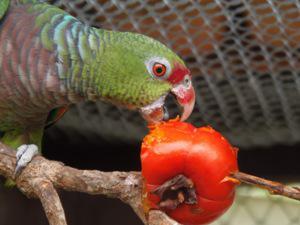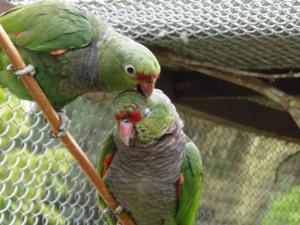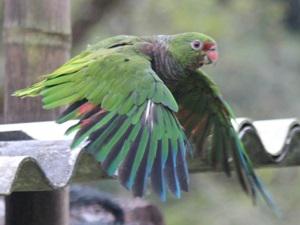André Becker Simões Saidenberg
Rehabilitation, captive breeding, release of confiscated Vinaceous Amazons to restore wild population numbers.

The Vinaceous Amazon is an endangered parrot with characteristic purple feathers around the breast and neck areas. It has suffered a rapid decline owing to extensive habitat loss and fragmentation, compounded by trade. Local extinctions have taken place in many areas around its distributional range.It is estimated that none of the subpopulations exceed 250 individuals with a decreasing trend. Despite massive deforestation where this species once occurred, there are now several areas of protected habitat where the forest has been restored.

Proposed conservation actions include developing captive breeding and raise local public awareness to curtail nest-robbing and promote conservation of nest sites. The planned reinforcement/reintroduction efforts in protected environments can help to recover the wild populations. The establishment of reintroduced juvenile/adult individuals also bypasses a critical part of the development where predation and poaching could more easily occur.

Experimental rehabilitation and release of confiscated birds during last years proved to be an effective conservation tool and starting in 2011, groups of birds are being reintroduced in the current project. In this proposal we seek to increase the capacity for rehabilitating and releasing birds in a larger scale to build on these early successes by further developing field research initiatives, as a five year project, as well as captive breeding for release, and assisting in related local area educational efforts to significantly grow the population of this species.
Specific objectives include:
-Rehabilitate confiscated Vinaceous Amazons from illegal trade.
-Encouraging captive reproduction and management of the species while maximizing reproductive potential and productivity, to enhance genetic diversity, and provide additional birds for release.
-Training rehabilitated and captive breed birds to recognize wild food and avoid predators.
-Tracking and monitoring released birds to determine survival and movements within release areas.
-Providing and managing artificial nest boxes around the release area to encourage natural reproduction, and to monitor developing nestlings to maximize the survival of the offspring that fledge.
-Developing an educational awareness program aimed to eliminate the illegal nest poaching through a community outreach program involving the local schoolchildren.